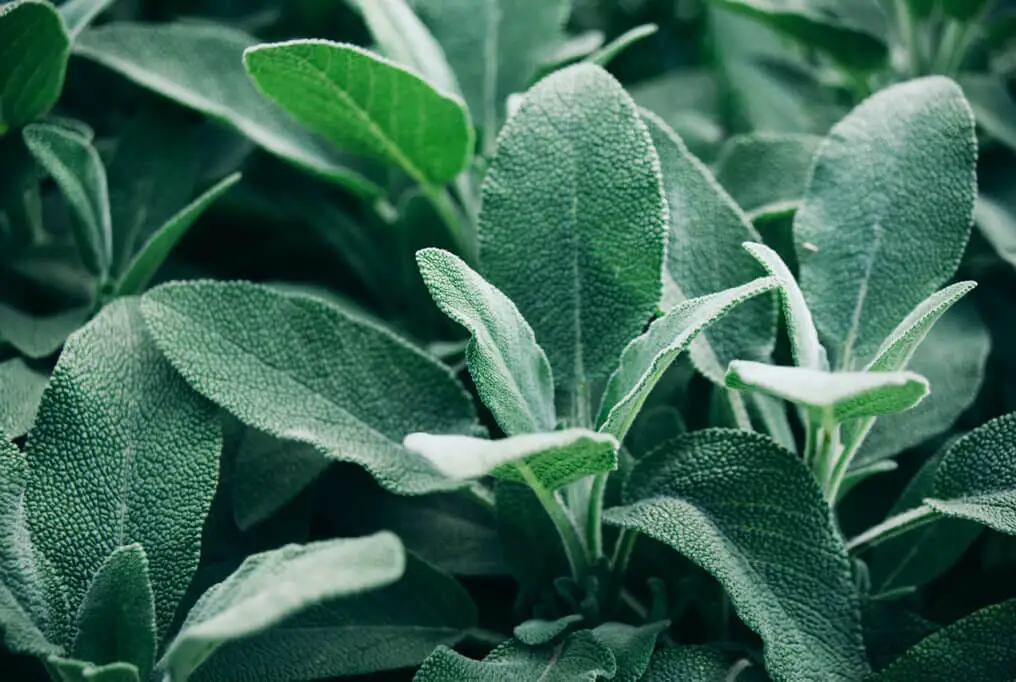There are plants that we use occasionally, and then there are those that quietly become the unsung heroes of our daily lives. Sage falls into the latter category.
While it may sit humbly in a spice jar on your shelf or grow quietly on your windowsill, sage is one of nature’s most versatile gifts—offering benefits that stretch from the kitchen to the medicine cabinet to the garden bed. With a rich history that spans centuries and civilizations, sage has long been prized for its ability to flavor meals, support wellness, and beautify the home environment.
Today, as more people turn to natural solutions and sustainable living, sage is experiencing a well-earned resurgence. But few realize just how many different ways this fragrant herb can serve them. This guide will take you deep into the culinary, medicinal, and gardening uses of sage—and help you unlock the full potential of this extraordinary plant.
🌿 What Is Sage, Really?
Known scientifically as Salvia officinalis, sage is a perennial herb from the mint family. Native to the Mediterranean, it has long been associated with wisdom, health, and even spiritual rituals. The name “Salvia” derives from the Latin word salvere, meaning “to heal” or “to save.”
Sage plants are easily recognizable by their soft, velvety leaves—grayish-green in color—and their spikes of purple, pink, or blue flowers. The plant is hardy, drought-tolerant, and ideal for both novice and seasoned gardeners alike.
🍽️ Culinary Uses of Sage: A Chef’s Secret Weapon
Sage’s bold, slightly peppery flavor and woodsy aroma make it a standout in the kitchen. Its essential oils are both flavorful and aromatic, transforming even the simplest dishes into memorable meals.
1. Seasoning for Savory Dishes
Sage is most commonly used to enhance hearty meals. Its earthy taste pairs beautifully with ingredients such as:
-
Pork and sausage
-
Turkey and poultry stuffing
-
Butternut squash and sweet potatoes
-
Cream sauces and gravies
-
Mushroom and risotto dishes
Whether fresh or dried, sage leaves infuse a dish with a warm depth that lingers on the palate.
Pro Tip: Fresh sage is more potent than dried. If a recipe calls for dried sage, you can substitute 3x the amount in fresh leaves.
2. Infused Oils and Butters
Infusing olive oil or butter with sage creates a flavor-rich condiment that can be drizzled over pastas, roasted vegetables, or grilled meats. Simply heat your base (oil or butter), add sage leaves, let them steep, and strain before use.
3. Sage Tea and Infusions
Boil a few fresh leaves in water and steep for 5–10 minutes to create a soothing herbal tea. Sage tea is not only flavorful but also offers multiple health benefits (more on that later). Add lemon or honey for an extra kick.
High-RPM Keywords:
cooking with sage, sage tea benefits, herbs for flavoring meat, how to make herb-infused oil
💚 Sage as Medicine: Ancient Wisdom Meets Modern Wellness
Sage has a long-standing reputation in folk medicine. From ancient Greece and Rome to Chinese and Ayurvedic traditions, it has been used to treat a range of ailments. Today, science is beginning to confirm what tradition has long claimed.
Here are some of the key health benefits of sage and how you can incorporate them into your daily routine.
1. Digestive Health
Sage can soothe gastrointestinal discomfort, reduce bloating, and promote healthy digestion. Drinking a cup of sage tea after meals may help your digestive system process food more efficiently and reduce gas.
2. Stress Relief and Mental Clarity
Sage contains compounds that help regulate mood and cognitive function. Its soothing aroma has been shown to reduce anxiety and promote calmness, making it ideal for:
-
Aromatherapy
-
Herbal tea blends
-
Diffuser oils for stress reduction
Some studies suggest sage extract may even enhance memory and improve alertness.
3. Anti-inflammatory and Antibacterial Properties
The herb is rich in antioxidants and volatile oils like thujone and camphor. These have been linked to:
-
Lowering inflammation
-
Fighting harmful bacteria
-
Supporting oral health when used as a mouthwash or gargle
In traditional medicine, sage has been used to ease sore throats, mouth ulcers, and gum infections.
4. Menopausal Support
Sage is known for helping to balance hormones. Women going through menopause may find relief from hot flashes, mood swings, and night sweats with sage supplements or teas.
5. Immune System Booster
Thanks to its antimicrobial properties, sage may help bolster the immune system and serve as a natural defense against seasonal illnesses.
High-RPM Keywords:
natural remedies for digestion, sage for stress relief, immune-boosting herbs, sage for menopause
🌸 Sage in the Garden: A Multi-Tasking Marvel
Beyond its kitchen and wellness uses, sage is a wonderful addition to any garden. It’s low-maintenance, visually appealing, and offers benefits that go far beyond aesthetics.
1. Ornamental Value
Sage plants come in various colors, from soft greens to purples, and their flowers attract admiration as well as pollinators. They thrive in containers, raised beds, or even window boxes.
-
Common varieties: Garden sage (Salvia officinalis), Purple sage, Tricolor sage, and Pineapple sage (which has a fruity scent)
2. Attracts Bees and Butterflies
Sage is a magnet for pollinators, which are essential for the health of your garden and local ecosystems. By planting sage, you’re directly supporting biodiversity and natural pollination.
3. Natural Pest Repellent
The scent of sage acts as a natural insect repellent, keeping away mosquitoes, flies, and cabbage moths. It’s a great companion plant for:
-
Tomatoes
-
Cabbage
-
Carrots
-
Strawberries
Sage helps protect your crops without the need for synthetic pesticides.
4. Drought Resistance
Once established, sage is extremely drought-tolerant and thrives in full sunlight, making it perfect for low-maintenance or xeriscape gardens.
High-RPM Keywords:
plants that attract pollinators, natural garden pest repellent, herbs for container gardening, drought-tolerant plants
🔥 Bonus: Other Surprising Uses of Sage
Sage’s versatility doesn’t stop there. Here are a few more creative uses for this amazing plant:
🔥 Smudging for Energy Cleansing
In many indigenous traditions, burning sage (commonly white sage) is used for spiritual purification. The practice, called smudging, is believed to cleanse spaces of negative energy.
🧼 Homemade Cleaners
Sage’s antibacterial properties make it an ideal ingredient for DIY natural cleaning sprays. Combine it with vinegar, lemon peel, and water for a powerful, pleasant-smelling disinfectant.
🧴 Herbal Skincare
Sage oil is sometimes used in cosmetic formulations for its astringent and anti-inflammatory properties, helping to balance oily skin and reduce blemishes.
🌿 Growing and Harvesting Sage at Home
Want to start your own sage plant? You’ll be glad to know it’s one of the easiest herbs to grow at home.
How to Grow Sage:
-
Sunlight: Full sun (6+ hours daily)
-
Soil: Well-drained, slightly sandy
-
Water: Let the soil dry out between waterings
-
Spacing: Allow about 18–24 inches between plants
-
Harvesting: Pick leaves in the morning once the plant is mature. Regular pruning encourages bushy growth.
Overwintering Tip: In colder climates, sage can be grown in pots and brought indoors during the winter.
✅ Final Thoughts: Why One Sage Plant Can Do So Much
Sage is more than just a culinary spice—it’s a healer, a protector, a pollinator magnet, and a symbol of wisdom. By growing and using sage, you tap into centuries of tradition, modern wellness science, and practical home care.
Whether you’re steeping a calming tea, flavoring a slow-cooked meal, repelling garden pests, or simply enjoying the scent of the leaves—sage rewards you in every way imaginable.
So, the next time you see a sage plant, don’t underestimate its value. That humble herb could be the most powerful green ally you ever plant.

